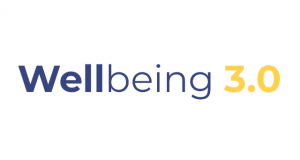

Five questions to ask and three strategies to put into action drive talent retention and attraction.
What keeps you at your job? Do you love what you do? Are you dissatisfied, burnt out, but need that paycheck for your family? Do you stay because the economy is terrible and it’s too much trouble and effort to look elsewhere? The old advice was always to be on the lookout for your next job, not burn your bridges, give adequate notice, and always have something lined up before you quit.
Then the pandemic hit, and the cracks that existed in many company cultures grew into large caps. People started to re-evaluate their situation. Some were pleasantly surprised and comforted by their company’s reaction as they struggled to find work-life balance with school-age children amid COVID and constant class exposure notifications. Others had had enough. Stories of people leaving without the standard leave notice and even quitting in the middle of shifts with no other jobs lined up started to spread. Then it became a trend that we now call the Great Resignation. A survey by consulting firm McKinsey & Company, spanning five countries and six major industries, revealed that 40% of people are at the very least, somewhat likely to quit their current job in the next 3-6 months. Further complicating things, 64% of employers went on to say that they anticipate it will only get worse in the next 3-6 months. How is this possible, and how did we get here?
The Not So Secret Reason People Are Leaving: It’s Not You, It’s Me
Here’s the thing: people want more. Specifically, freedom to work remotely, take time off when needed (not have to request it, and hope it gets approved). If their daughter gets sick, they don’t want to be penalized or chastised at work for not coming in to be home with their sick child.
At first, companies thought the answer was a raise. One healthcare company offered a $1,000 bonus to every employee that stayed after enforcing a mandatory COVID-19 vaccine for all employees. Others have made work from home positions permanent, created hybrid work from home/office positions, or offered presents like themed perks to staff and their families with things like movie tickets and popcorn. But is that enough to make people stay? Are you asking them the right questions? This Harvard Business Review article offers an outside-the-box approach to reaching and securing talent before they even leave.
And it starts with these five questions:
- What aspects of your job are most rewarding and interesting?
- What areas are most
challenging right now?
- In terms of short-term and long-term career goals, what are you doing right now to work toward those?
- Are there other projects, committees, or responsibilities you want to join?
- Is there anything else you haven’t explored yet that you’re curious about?
By engaging people, you not only build your relationship by taking an active interest in their life, but you also gain valuable insight into the hidden drivers that motivate them to stay and come to work each day. Still, if you work them to the point of burnout, there reaches a point of no return where many check out and won’t come back. And even if you begin asking the right questions, it’s not enough to make them stay.
Make Purpose Your Guide and the Right People Will Come To You
Purpose: all of us seek it in our personal and professional lives, and some are lucky enough to find it in both. When we’re happy at home, it affects our productivity at work. When we take pride in what we do and who we work for, it impacts us and those around us on an even larger scale, resulting in increased productivity, creativity, and job satisfaction, among other things. So how do we get there? How do we attract talent driven by purpose? It starts from the ground up.
This Forbes Human Resources Council article suggests these three strategies:
Prioritize Diversity and Inclusion Practices
If you want a diverse audience, you need a diverse company that is inclusive and composed of people from different backgrounds, ethnicities, and beyond.
Be Flexible and Open to Different Work Models
Many who went temporarily remote during the pandemic won’t return to the office and would rather quit than give up working from home. The appeal of working remotely or a hybrid model is a driving force for many. While one company may refuse to bend its policy, you may go on to gain an experienced, highly motivated team member.
Use Tech to Attract Talent and Invest in Your People
At least one part of the hiring process is automated these days, whether it’s an initial personality survey, screening potential talent, or standard onboarding procedure. But once you have talent on your team, how do you use technology to your benefit?
Focus on what matters most: the wellbeing of your people.
Remember that ultimately, to attract and retain the right people, there is no easy answer. Ask questions and dig deeper to discover what people want from the get-go. Listen, observe, empathize, and above all, be flexible and open to the possibilities.
About the Author

Vic Strecher, PhD, MPH
CEO and Chief Purpose Officer, Kumanu
Vic Strecher is professor of Public Health, founder of the Center for Health Communications Research, and Director for Innovation and Social Entrepreneurship at the University of Michigan. In 2015, Vic launched Kumanu, leading a paradigm shift in how individuals engage in the pursuit of purpose, meaning, and wellbeing. As CEO and chief purpose officer, Vic leads the company as well as its world-class Scientific Advisory Board.
Stay on top of the news
Subscribe today and receive our Reimagining Wellbeing newsletter delivered to your inbox every month!
